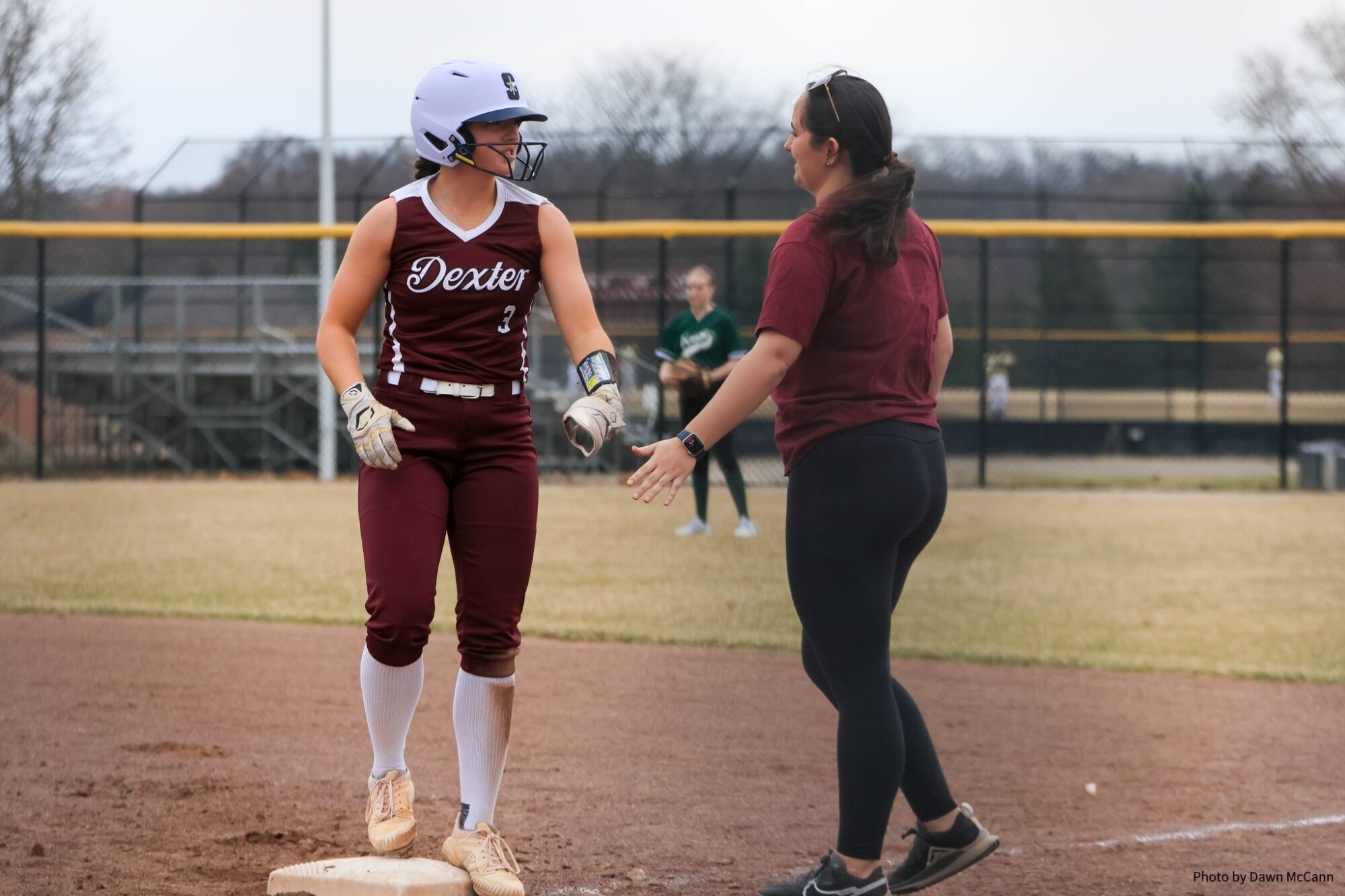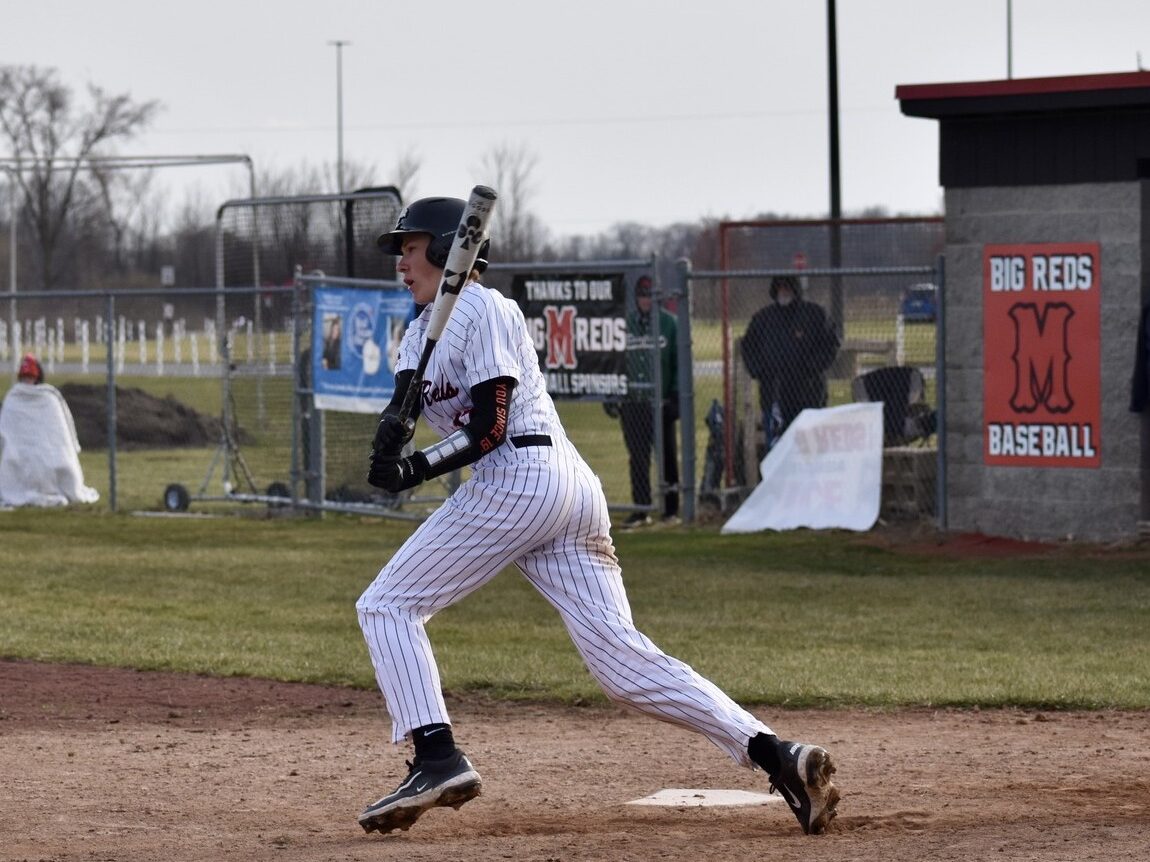Approving the ambitious plans will not cause any increase in taxes.
In a special election scheduled for May 6th, Dexter Community Schools (DCS) will be asking voters in the school district to consider a bond proposal worth $241,865,000. While there is a lot to know before casting a vote, the most important is that approving the bond will not cause an increase in taxes.
Here is a breakdown of DCS’s school improvement bond proposition designed to help readers understand the proposal and make an informed choice on their ballot.
What is a school bond?
A school bond is a financial tool public schools in Michigan use frequently to supplement their state and federal funding. Supplemental, long-term funding is often necessary because the majority of annual funding from the state is reserved for the regular operating expenses of a district. After covering those annual operational and maintenance expenses, which are things like salaries, utilities, and classroom supplies, it is rare for a district to have enough money left to pay for the new construction or major upgrades that are necessary to support a successful school district over time.
In simplest terms, a school bond is a loan to a school district from a financial institution. Like any loan, it must be repaid. The school district pays the loan back by collecting a bond tax–called a bond millage–from all property owners in the district, usually over a span of several years. This is why district voters must approve a school district’s use of bonds.
Clear rules about the purpose and use of bond funds are detailed in the Michigan School Bond Qualification, Approval, and Loan Act (Public Act 92 of 2005). Generally, bond funds can only be used for long-term, capital investment projects like the construction of a new building or district-wide technology upgrades. By law, bond funds cannot be used for recurring or routine operational and maintenance expenses.
The use of bond funds is usually spread out over several years, often a decade or longer. This means that rather than borrowing the full amount approved by voters at one time, school districts will break the total amount approved into smaller chunks–called “series”–and borrow smaller amounts that correspond to the amount needed for the next “batch” of projects scheduled in their long-term construction plan.
While this method requires significant advanced planning and organization to manage successfully, it reduces the amount of interest paid, minimizes the district’s financial risk, and allows for a stabilized and predictable tax rate over the long run.
Overview of DCS Bond Funds Plan
Dexter’s 2025 School Improvement Bond proposal asks district voters to approve a total bond amount of $241,865,000 to be distributed in one or more series. While that may seem like a large number, it will cover existing bond debt, multiple new construction projects, and several major renovations and upgrades that are necessary just to keep current facilities in safe, ADA-compliant, working order.
DCS’s proposed projects are organized into four main categories. The categories are age-appropriate academic campuses; infrastructure, safety, and security; enhanced student experience; and arts and athletics for students and the community.
Age-appropriate Academic Campus
If the bond is approved, one of the biggest changes will be which grades occupy which facilities. With the ability to make major renovations to existing buildings, DCS will re-assign grade levels to buildings so that K-6 students will all be in buildings on the east side of Baker Road and 7-12 will be located on the west side of Baker Road. The Dexter Early Education Complex (DEEC) will remain Y5-2 and Wylie will remain 3-4. However, grades 5-6 will move to Mill Creek and 7-8 will be located at Creekside. This will improve student and driver safety and reduce travel friction caused by the varying start times.
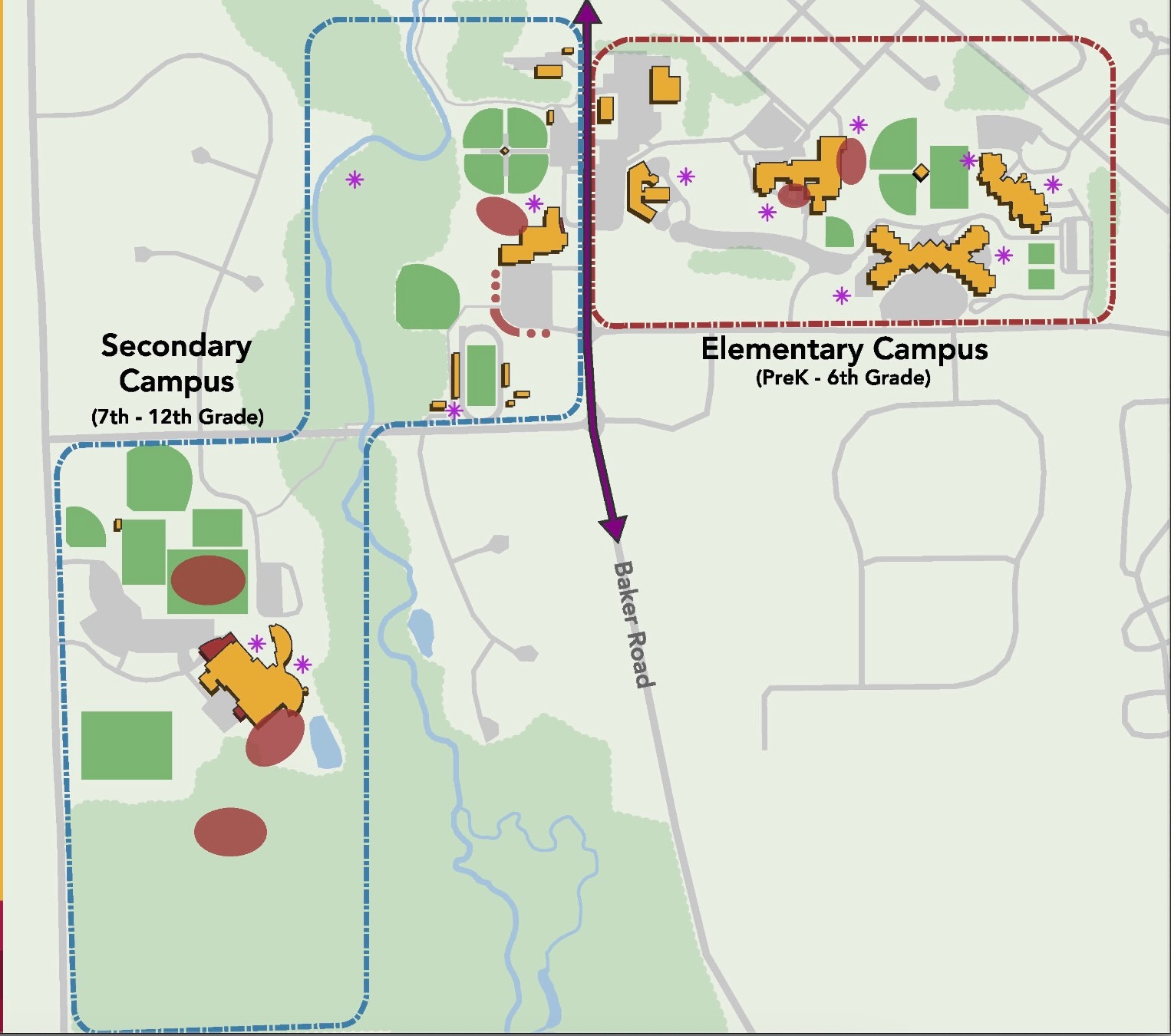
Infrastructure, Safety, and Security
DCS owns twelve different buildings across the district and nearly all of them require some amount of remodeling or updates just to remain operational. Before convening the Bond Committee, DCS underwent a complete assessment of the condition of all its facilities. The full list of work needed for each building is available on the district’s bond website but in short, the projects include roof repair/replacement; bathroom renovations; window replacement; secure entryways with improved access control; new ceilings and floors; HVAC, fire alarm, and sustainability updates; updated plumbing and electrical; playground improvements and accessibility upgrades; road repair and sidewalk replacement; and upgraded interior and exterior doors.
Enhanced Student Experience
This mostly involves updated furniture, school technologies and devices, and redesigned, age-appropriate learning spaces to maximize collaboration with teachers and peers.
Arts, Athletics, and the Broader Community
The biggest project in this category is a new, 60,000 sf, indoor, multi-purpose athletic complex that will also be available for community use. Other projects include a new auditorium at Creekside with the capacity to accommodate 300+ guests along with upgrades to the current Center for Performing Arts at the high school; new instruments for the music programs; repairs to aging gym facilities including a new weight room and fitness equipment at the high school; upgrades to Al Ritt Stadium and other athletic fields; and new restroom facilities for outdoor athletic spaces.
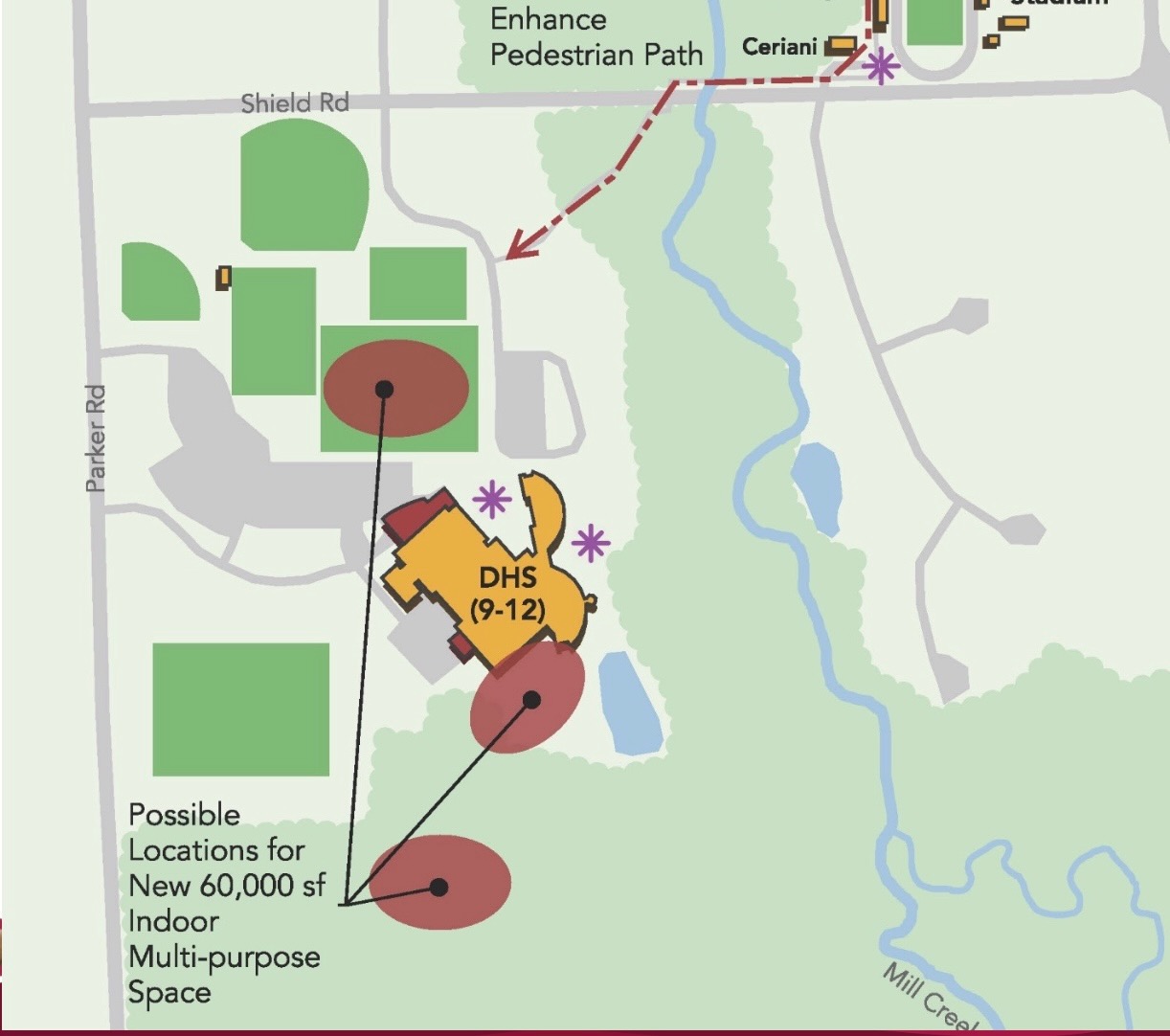
DCS Financial Model
With such a long list of projects ahead, how can the district complete the work without causing any tax increases? The answer is pretty simple. DCS property owners currently pay a bond mill rate of 8.5 mills for a bond they approved in 2017. In fact, that bond mill rate has been unchanged and approved by voters in DCS every few years since the late 1990s. So, while the 2025 Bond Improvement Proposition is technically a new loan for new projects, the way it’s timed and structured allows it to be repaid without increasing the mill rate.
DCS assumes there will be a need for some amount of bond money every year so, like many, many school districts in Michigan, it carries a continual ‘bond debt.’ It means that DCS, like most public school districts, is always collecting a bond millage from district taxpayers.
According to DCS Superintendent Chris Timmis, bond millage rates used to vary quite a bit from project to project. In 1967, DCS had a 5.5 bond mill rate to cover the cost of additions to Wylie and Bates. 1979 saw a mill rate of .7 to cover the cost of new band uniforms and install a track and 1982 incurred a .5 mill bond for various roof repairs. While those projects were successful, that bond strategy meant that tax rates were constantly in flux, making it hard for taxpayers to make accurate predictions about their tax liabilities from year to year.
In 1993, Michigan voters approved Proposal A, which completely changed the way public schools were funded statewide and significantly reduced the school tax burden on property owners. A few years after that DCS, like most school districts, redesigned their own planning and financial models to accommodate the state’s new funding structure. The new model makes regular use of long-term funding tools like bonds to increase the likelihood that money for major projects will be available when needed and tax rates are stabilized. Since then, the district has been able to keep a steady bond rate of 8.5 mills, which is where it remains today.
What happens if the proposal fails?
If voters do not approve the 2025 Bond Improvement Proposition, the bond mill rate will likely remain at 8.5 mills for at least a couple of years and then decrease to somewhere in the 7.x range until existing debt is paid off.
However, because several of the planned projects will be required at some point for safety and compliance purposes, the district would have to introduce a new bond mill rate eventually.
“If we wait two years to bring the necessary infrastructure updates only, the bond debt would drop into the 7’s but any new bond would take it well above 8.5 mils. Bringing a proposal now provides stability and actually allows the infrastructure repairs to happen in a planned program versus emergency repairs which are much more costly,” said Superintendent Timmis.
In Conclusion
DCS administrators spent more than nine months collecting and assessing information on its current and future needs, assembling a Bond Committee comprised of engaged community members, and leading the committee through its development of the current bond proposal. The entire process, the information collected, details about each project, and the full ballot language are carefully laid out on the DCS website.
When contacted about the bond proposal by The Sun Times News Superintendent Timmis said, “The boundaries of Dexter Community Schools have long defined the Dexter community and our residents have always demonstrated a deep commitment to education as a top priority. The results are evident every day in our schools, in our community, and in our students. As a school district, Dexter Community Schools consistently ranks as one of the highest-performing school districts in the State of Michigan and the entire country. More importantly, because of the community’s commitment to our schools, Dexter is a tremendous place to raise a family and call home.”
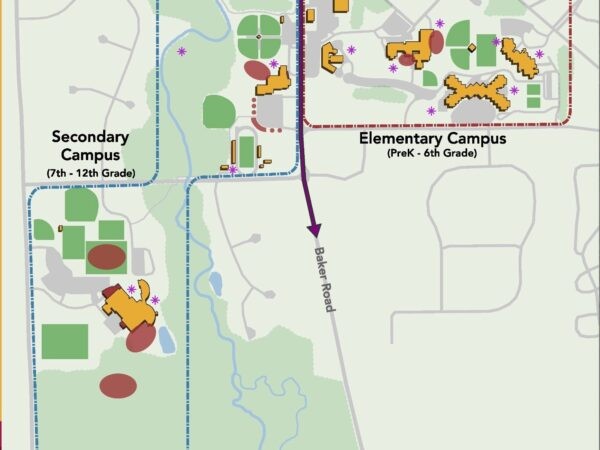





 8123 Main St Suite 200 Dexter, MI 48130
8123 Main St Suite 200 Dexter, MI 48130
